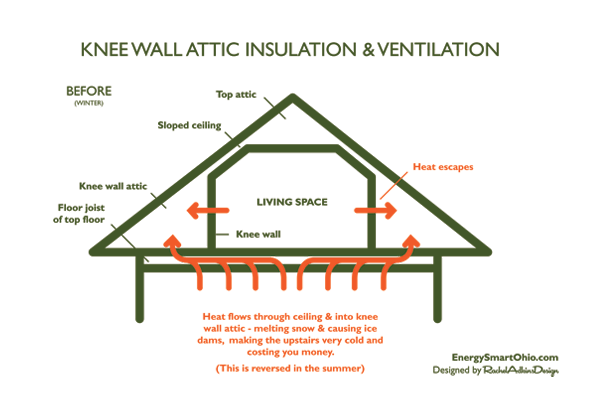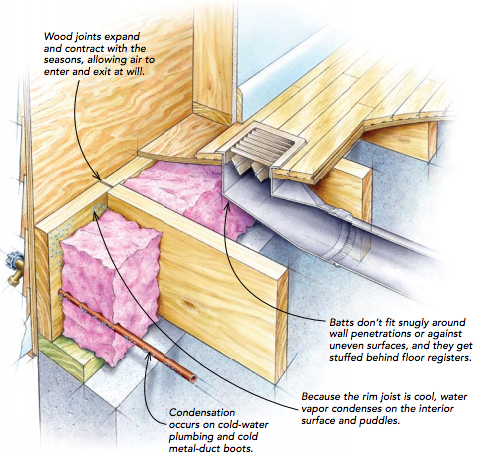 Rooms over attached garages, which can be uncomfortably hot or cold depending on the season, are a perfect example of how heat moves from warmer spaces to colder spaces, by taking the path of least resistance. Typically, the problem is that poor insulation and air-sealing details allow unconditioned outside air to mix with conditioned interior air. This makes these rooms difficult to heat and cool.
Rooms over attached garages, which can be uncomfortably hot or cold depending on the season, are a perfect example of how heat moves from warmer spaces to colder spaces, by taking the path of least resistance. Typically, the problem is that poor insulation and air-sealing details allow unconditioned outside air to mix with conditioned interior air. This makes these rooms difficult to heat and cool.
Rooms that include attic spaces, such as those behind a knee wall, are often a problem for the same reason. Making the space comfortable involves separating the unconditioned space from the conditioned space. Like garage ceilings, attic knee walls often lack blocking and air-sealing to stop air movement, The result is an uncomfortable space that wastes energy. With any garage bonus room, the solution is to effectively air-seal the garage ceilings and increase insulation levels.
 One scenario is to add rigid insulation on the bottom of the floor joists and cover it with drywall. The rigid insulation acts as a thermal break, preventing heat from traveling through the joists to the cooler space on the other side of the joist. The drywall also protects the foam from fire.
One scenario is to add rigid insulation on the bottom of the floor joists and cover it with drywall. The rigid insulation acts as a thermal break, preventing heat from traveling through the joists to the cooler space on the other side of the joist. The drywall also protects the foam from fire.
If you are having problems with heat control, especially in an area near or above the garage, it is important to check your insulation in order to save yourself some money with heating or cooling bills. Finding the problem and fixing it is the best solution through a building science perspective.
For more information on building sciences, visit FineHomebuilding.com/extras

No comments:
Post a Comment